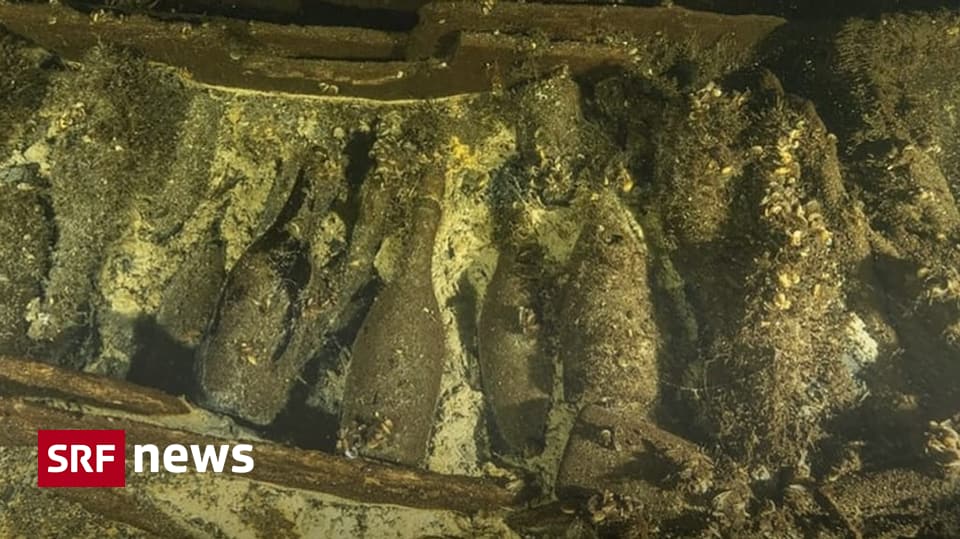Populations now separated by ice were clearly once related: Researchers have discovered evidence of the collapse of the West Antarctic ice sheet during a warm phase about 120,000 years ago in the genome of an Antarctic octopus species. Worryingly, average global temperatures at that time were supposed to have been only about 1 degree Celsius higher than pre-industrial values. Researchers say the findings confirm previous concerns that ice loss in West Antarctica and resulting sea level rise could be caused by moderate increases in temperature.
This is perhaps the clearest sign of global warming: the ice masses on our planet are clearly shrinking, and this poses a danger to humanity: due to the influx of huge amounts of meltwater, global sea levels are rising, and this threatens to cause flooding in some areas with High population density. Populated coastal areas. In addition to the glaciers in the north, the anxious gaze is also directed towards the icy south. The West Antarctic Ice Sheet is particularly vulnerable to rising temperatures. It is a one-kilometre-thick mass of ice located partly on the mainland of West Antarctica and also extending into the adjacent sea.
Did the ice sheet once disappear?
According to studies, it has already become clear that climate change is eating away at the ice sheet in West Antarctica. But it is unclear how this could develop further in the wake of climate change. However, it seems clear that there is a huge potential for danger if the giant glaciers continue to melt: if the West Antarctic ice sheet disappeared completely, sea levels would rise by about three to five metres. Some studies also show that this can happen. The tipping point that leads to complete loss of glaciers may lie within current global climate targets of a temperature rise of 1.5 to 2 degrees Celsius.
As evidence of this, there is geological evidence that the West Antarctic Ice Sheet may have melted during the last glacial period, 129,000 to 116,000 years ago. According to estimates, the average global temperature at that time was only about 1 degree Celsius higher than pre-industrial values. Whether the ice sheet has actually disappeared remains controversial, as there have also been study results that contradict this scenario.
Eight armed witnesses to the loss of the ice?
In order to provide new evidence for this geological and climate question, researchers now led by Sally Lau of Australia’s James Cook University in Townsville have taken an approach that might seem surprising at first: they looked for traces of possible ice loss in an organism’s genetic history. Octopus – a species that lives in the marginal seas surrounding Antarctica. The crux of the matter is that the Pareledone turqueti populations in the Ross Sea and Weddell Sea are now geographically isolated from each other by ice masses in the West Antarctic Ice Sheet and its foothills. Does the genome of this species reflect that this was not the case in the past?
To answer this question, the researchers sequenced the genomes of a total of 96 specimens of the parelidon octopus caught in different marginal seas of Antarctica. They examined the animals’ genetic makeup for what are called single nucleotide polymorphisms (SNPs), which are characteristic changes in just one DNA base that can be used to differentiate between populations. First of all, it has been shown that subpopulations in different regions of the ocean actually differ genetically in a distinct way. But among the now-separated octopuses in the Ross Sea and Weddell Sea, researchers have found surprising signs of mixing in their genomes.
The team then conducted biogeographic modeling to shed more light on what may be the most plausible explanation for this gene flow in the species’ history. Admixture through the exchange of individuals across the Antarctic Circumpolar Current does not fit the patterns of admixture found in both octopus populations. Instead, the data suggest that there was direct contact between octopuses in the two ocean regions. Specifically, the researchers concluded that octopuses mixed through direct marine contact between the Ross Sea and the Weddell Sea, which apparently formed in the last interglacial period. In other words, the genetic discovery is clear evidence that the West Antarctic ice sheet melted during the last glacial period.
Is the same thing happening now?
This now raises a crucial question: Can the process that once led to ice loss still be avoided? “Our results provide evidence that the tipping point for West Antarctic ice sheet loss can be reached even under strict climate protection scenarios,” the researchers write. Scientists say that if global warming increases by 1.5 to 2 degrees Celsius above pre-industrial levels, meltwater from the West Antarctic ice sheet could contribute several meters to sea level rise in the coming centuries.
In order to shed light on potential developments, more research is now necessary, Andrea Dutton of the University of Wisconsin-Madison and Rob DeConto of the University of Massachusetts at Amherst wrote in a commentary on the study. According to them, it should be clarified when exactly the melting occurred and under what conditions. For example, it is also possible that changes in ocean currents, rather than air temperature, triggered this process.

“Alcohol buff. Troublemaker. Introvert. Student. Social media lover. Web ninja. Bacon fan. Reader.”







More Stories
Is the wrong diet making you forget?
We can study it with a new telescope.
Education: Start studying astronomy at school.